Opinion
The Middle Class Crunch Has Finally Hit The Indian Economy. The Government Must Shifts Its Focus From Corporate Boardrooms To Kitchen Tables!
Published
11 months agoon
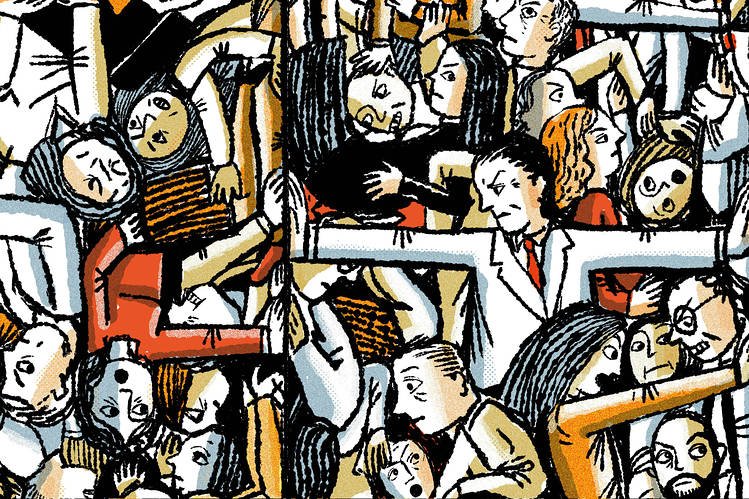
It wasn’t as if we weren’t warned. The middle class have been sounding the alarm for sometime: real incomes are shrinking, inflation is gnawing away at purchasing power, and consumer spending is slowing. Yet, it’s only when the mighty kings—the giants of India’s corporate scene—start feeling the squeeze that the nation collectively sits up and takes notice.
The Indian middle class, often touted as the backbone of the “India growth story,” has been struggling with a harsh reality for sometime now. Wages have contracted for the first time since the pandemic, inflation is relentless, and household spending has slowed dramatically. The cracks in the foundation of this economic powerhouse are no longer hairline fractures—they’re gaping chasms.
A Grimer Than Grim Situation
For the first time in recent memory, wages in India’s urban sector have seen a decline. Data shows that inflation-adjusted employment costs for non-financial companies fell by 0.5% from July to September compared to the previous year.
This might sound like a small dip, but it’s a seismic shift for urban families already stretched thin. Inflation is devouring disposable income, forcing cutbacks even on essentials, with consumer goods giants like Hindustan Unilever and Nestlé India reporting weaker-than-expected growth due to declining urban demand.
Even Maruti Suzuki, a barometer of middle-class aspirations, is witnessing a divergence in demand. Rural sales climbed 8% in the first half of the fiscal year, but urban sales fell by 2%. The message is clear- India’s cities, once buzzing with consumption-driven growth, are tightening their purse strings.
The slowdown in urban consumption isn’t just a statistical blip—it’s reverberating across boardrooms. Nearly half of the companies in the NSE Nifty 50 Index have missed their earnings estimates. Consumer bellwethers are struggling, from Nestle to Hindustan Unilever, with spending on everything from basic toiletries to big-ticket items like cars falling.
Despite these warning signs, the Reserve Bank of India (RBI) remains focused on controlling inflation, resisting calls for interest rate cuts to stimulate demand. However, the pressure is mounting. Policymakers are walking a tightrope, balancing inflation control with the need to reignite consumption.

Housing Costs. The Final Blow
To add insult to injury, housing costs in metro cities are skyrocketing. Real estate prices have surged by 23% nationwide, with Mumbai and Bengaluru leading the charge.
Rent and utilities are eating up a larger chunk of household budgets, leaving little room for discretionary spending, this is the perfect storm: rising living costs, stagnant wages, and dwindling consumer confidence.
Private consumption, which accounts for nearly 60% of GDP, has stumbled. Personal final consumption expenditure (PFCE) fell to 55.8% of GDP in 2023-24 from 58.1% in 2021-22, indicating the scale of the slowdown.
The Tech Sector Is A Fading Bright Spot
Even the once-thriving technology sector isn’t immune. The growth in employee costs for IT giants like TCS, Infosys, Wipro, and HCL Technologies has slowed, with a mere 3.3% increase in Q3 2024 compared to 8% the previous year. The slowdown in tech hiring and muted profitability in manufacturing are squeezing real incomes further, amplifying financial stress.
The Debt Trap
India’s middle class, once the engine of the economy, is now being forced to dip into savings or take on debt to maintain their standard of living. This isn’t just an economic issue—it’s a social one. A financially stressed middle class means subdued aspirations, reduced upward mobility, and a potential erosion of the very fabric that has driven India’s growth.
For far too long, the Indian government maintained an ostrich-like posture, refusing to acknowledge the rumblings of a consumption crisis. Now, reality has forced its hand.
In a rare admission, the Ministry of Finance’s latest monthly review concedes that consumer demand is softening. The report points to a sharp decline in FMCG sales and a 2.3% contraction in automobile sales. Housing? It’s the same story—both sales and new launches are slowing, reflecting a market losing steam.
For decades, the business plans of FMCG giants, automakers, and real estate developers have been tethered to the idea of a robust middle class with money to spare and a desire for a better lifestyle. This middle class was sold as India’s economic golden goose—an ever-expanding segment ready to spend on everything from soaps to SUVs.
The 450-Million Myth
In the early days of liberalization, it was estimated—quite optimistically—that a 450-million-strong middle class would drive India’s growth. Management consultants and market researchers painted rosy pictures, promising companies a consumer base as vast as entire continents.
But reality has been less kind.
Two decades later, those estimates have proven to be more fantasy than fact. A more realistic projection, according to the Pew Research Centre, pegged the pre-Covid middle class at around 99 million, defined as those earning between $10-$20 a day (roughly ₹25,000-₹50,000 a month). And then came the pandemic, which saw one-third of this already fragile group slip out of the middle class.
By mid-2023, it seemed like the middle class was recovering, now estimated to be over 100 million strong. But cracks remain. This recovery is fragile, as many have barely clawed their way back into financial stability.

Inflation. The Silent Killer
Retail food inflation is gnawing away at disposable income. Despite a fair monsoon, food inflation soared to 9.22% in September, up from 5.66% in August. Pulses are up nearly 10%, and vegetables? A staggering 36% increase. When a significant chunk of monthly budgets is consumed by basic necessities, there’s little left for discretionary spending.
This rising cost of living poses a direct challenge to Prime Minister Narendra Modi’s ambitious growth agenda. His government’s pledges to create jobs and fuel economic expansion are now at risk.
Pressure is mounting from all corners—finance and trade ministers are advocating for interest rate cuts to reignite demand, while the Reserve Bank of India (RBI) remains steadfast, prioritizing inflation control over growth.
The economic slowdown is also becoming a political flashpoint. India’s opposition parties have seized the moment, accusing Modi’s government of neglecting the middle class and its growing financial strain. With general elections around the corner, this narrative could gain significant traction, especially if middle-class woes persist.
The Delusion
India’s economy is often portrayed as “sailing through smoothly,” championed by the Reserve Bank of India (RBI). This optimism stems from the belief that rural spending and private investments are improving.
However, this rosy outlook conveniently ignores the dark reality faced by India’s urban middle class—the engine that drives private consumption and, by extension, nearly 60% of the country’s GDP.
While central banks worldwide have pivoted towards easing monetary policies, the RBI remains defiant. Governor Shaktikanta Das argues that any rate cuts now would be “very risky” given inflation risks.
But let’s ask the real question – risky for whom? The middle class, already reeling from shrinking real wages and soaring living costs, is being crushed under this unwavering inflation target.
For context, housing prices have skyrocketed post-COVID, with urban rents and school fees following suit. These are not minor inconveniences—they’re fundamental expenses. With no corresponding increase in wages or tax relief, the middle class finds itself in a vicious cycle where every rupee earned is pre-assigned to basic survival, leaving little for discretionary spending or future savings.
The Tax Burden IS An Unbearable Load
The elephant in the room is India’s oppressive tax structure. Despite inflationary pressures and stagnant wages, individual income tax rates remain among the highest in the world. For a middle-class household, there’s no escape:
High Income Tax Rates: Individual taxpayers are subjected to rates as high as 30% plus surcharges, while corporate tax rates have been slashed to as low as 22%.
Dividend Taxation: Taxes on dividends from shares and mutual funds are further eroding disposable incomes. What’s left for the average investor after paying these taxes? Little to nothing.
Let’s be blunt- the current tax system is a wealth redistribution mechanism—but not in favor of the common man. Instead, it concentrates wealth into the hands of a few corporate giants. Billionaires like Adani and Ambani have seen their fortunes soar, even as the middle class drowns in debt, inflation, and taxes. This wealth gap is not a natural byproduct of capitalism—it’s a policy-driven crisis.
The Hollowing Out of the Middle Class
This government’s economic policies—whether intentional or incidental—are gradually eroding the middle class. Without wage growth, relief from high taxes, or affordable living costs, the middle class is being pushed down the socio-economic ladder. We’re witnessing a dangerous transition where middle-income earners are slipping into lower-income brackets, fundamentally altering the structure of India’s society.
Let’s break this down further –
Housing Costs: Real estate prices have surged by 23%, with no signs of slowing. Urban rent hikes and exorbitant school fees leave little room for discretionary spending.
Taxation Disparity: While corporate tax rates have been reduced to encourage business growth, personal income taxes remain punishingly high. The government’s prioritization of corporate profitability over individual welfare is clear.
Corporate Welfare vs. Public Welfare
The government’s policies have disproportionately favored large corporations. Consider the abolition of the Dividend Distribution Tax (DDT) and the reduction in corporate tax rates. These moves are sold as measures to boost investment and economic growth, but the reality is a sharp contrast: large corporations are flourishing, while the middle class is floundering.
If the government is serious about reviving consumption and economic growth, it’s time for a policy shift:
Income Tax Reform: Reduce income tax rates for individuals, aligning them more closely with corporate rates. This will provide immediate relief and increase disposable income.
Inflation Target Adjustment: Lower the inflation target from the current 4% to 2%. A lower inflation target would ease the cost-of-living crisis, particularly in essential sectors like food and housing.
Address Wealth Inequality: Introduce measures to curb the concentration of wealth. Higher taxes on ultra-wealthy individuals or luxury goods could redistribute wealth more equitably without stifling growth.
The Last Bit
The middle class isn’t just a demographic—it’s the backbone of India’s economic and social stability. Ignoring its plight is not just short-sighted; it’s perilous. Without immediate intervention, the slowdown in consumption will escalate into a broader economic crisis.
It’s time the government shifts its focus from corporate boardrooms to kitchen tables, where the real India is struggling to make ends meet. India’s future depends on its middle class. Will it be nurtured or neglected into extinction?
You may like
-
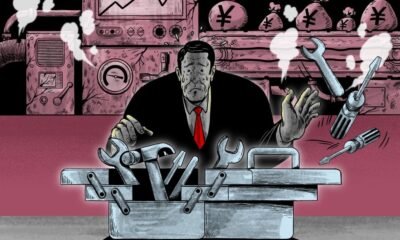

China To Cut Inflation Outlook To 20-Year Low, Eyes Fresh Stimulus At ‘Two Sessions’ To Boost Economy
-


Trump’s Latest Tariff Move on Mexico and Canada. Import Taxes Back on Track Hinting At A Full Blown Trade War!
-
India Cuts Tariffs On US Bourbon! But Do Trump’s Retaliatory Tariffs Mean Cheaper American Goods For Indian Consumers?
-
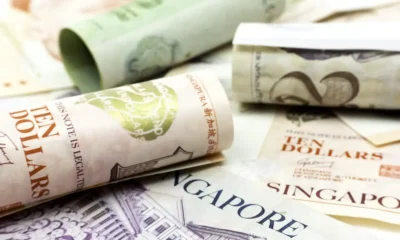

Singapore Economy On A High. Annual GDP Expands At Fastest Pace Since 2021. Asian Markets Mixed Bag Reaction To Trump’s Reciprocal Tariffs
-
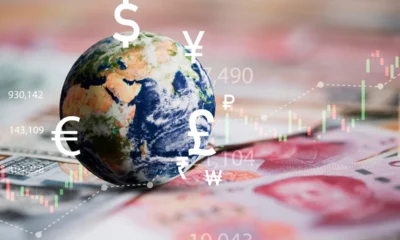

Global Economic Pulse, UK’s Surprise Growth, US Inflation Jumps While China And Japan Battle It Out—Who’s Leading And Who’s Lagging?
-
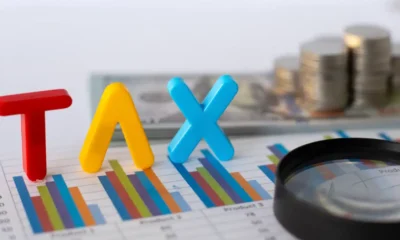

All You Need To Know About The New Income Tax Bill 2025, Debuts With A New Concept Of ‘Tax Year’. A Meaningful Change Or Just A Facelift?
